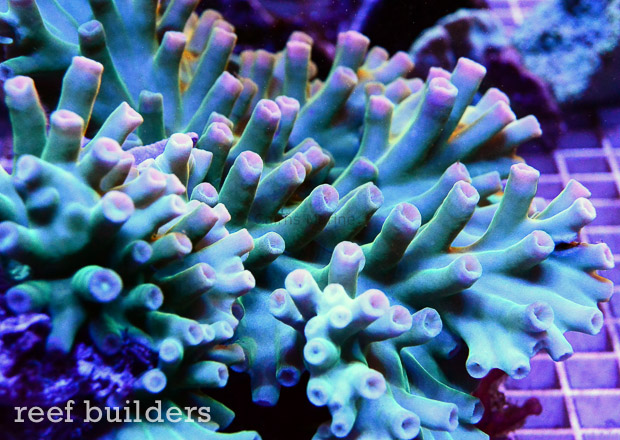It was approximately three years ago that the first tiniest influx of Hero corals began making their general debut in the marine aquarium hobby. We got our piece of Turbinaria heronensis back then and it was a struggle to keep the hero coral alive through the acclimation to aquarium life, but ever since then the hero coral has become a white rhino of coral collectors; you know they exist and some people have seen them but there were just none to be had, not even frags.
Thanks in part due to our incessant cheerleading for cool, new and exciting corals like the Hero Turbinaria, Cairns Marine of Australia recently collected a small harvest of the elusive Hero coral. Not only will Cairns be offering the Hero coral in limited numbers to select coral collectors around the world, but they’ve also gathered something equally valuable which is information about this coral’s natural habitat and the environment in which it was spotted.
 While Cairns Marine’s coral collecting crew was out on assignment, the skipper of their coral boat found them himself. The Hero corals were at a reef about 25 nautical miles off the coast and he was hanging out at around 25m (~80ft) with roughly 15m (45ft) visibility looking for Euphyllia and Lobophyllia. One colony of Turbinaria heronensis was at the base of a rock face – The nice green specimens of Hero coral were collected from a colony at the bottom of this face and then there was another brown piece on the same rock but shallower at 17m (50ft).
While Cairns Marine’s coral collecting crew was out on assignment, the skipper of their coral boat found them himself. The Hero corals were at a reef about 25 nautical miles off the coast and he was hanging out at around 25m (~80ft) with roughly 15m (45ft) visibility looking for Euphyllia and Lobophyllia. One colony of Turbinaria heronensis was at the base of a rock face – The nice green specimens of Hero coral were collected from a colony at the bottom of this face and then there was another brown piece on the same rock but shallower at 17m (50ft).
 So there you have it, Turbinaria heronensis was keeping company with Euphyllia and Lobophyllia, in what is likely a moderate energy reef environment at a depth between 50 and 80 feet. In this kind of environment, depth, and moderate visibility, we presume that the light level that the Hero corals adapted to were very likely on the low end. Since we know that Euphyllia and Lobophyllia do prefer slightly richer nutrient waters, we can assume the same of T. heronensis and the fact that it gets crazy large Dendrophyllia-style polyp extension at night adds to the notion that Hero corals like to eat.
So there you have it, Turbinaria heronensis was keeping company with Euphyllia and Lobophyllia, in what is likely a moderate energy reef environment at a depth between 50 and 80 feet. In this kind of environment, depth, and moderate visibility, we presume that the light level that the Hero corals adapted to were very likely on the low end. Since we know that Euphyllia and Lobophyllia do prefer slightly richer nutrient waters, we can assume the same of T. heronensis and the fact that it gets crazy large Dendrophyllia-style polyp extension at night adds to the notion that Hero corals like to eat.
 To quote the skipper of the Cairns Marine coral boat who first sighted the Hero corals, he said “it definitely stood out from its surroundings”. It’s cool to know that an eye-catching coral in the aquarium is equally as striking in the wild and we get a warm and fuzzy feeling knowing one of our holy-grail-iest stony corals will now be enjoyed by a handful of additional reefers around the world. If you do end up with a piece of Turbinaria heronensis to keep and grow in the aquarium, please remember to provide it with greatly reduced lighting to begin its aquarium acclimation and target feed those hungry coral polyps at night on a regular basis to keep the colony or frag well fed during its adjustment to life growing in an aquarium.
To quote the skipper of the Cairns Marine coral boat who first sighted the Hero corals, he said “it definitely stood out from its surroundings”. It’s cool to know that an eye-catching coral in the aquarium is equally as striking in the wild and we get a warm and fuzzy feeling knowing one of our holy-grail-iest stony corals will now be enjoyed by a handful of additional reefers around the world. If you do end up with a piece of Turbinaria heronensis to keep and grow in the aquarium, please remember to provide it with greatly reduced lighting to begin its aquarium acclimation and target feed those hungry coral polyps at night on a regular basis to keep the colony or frag well fed during its adjustment to life growing in an aquarium.




